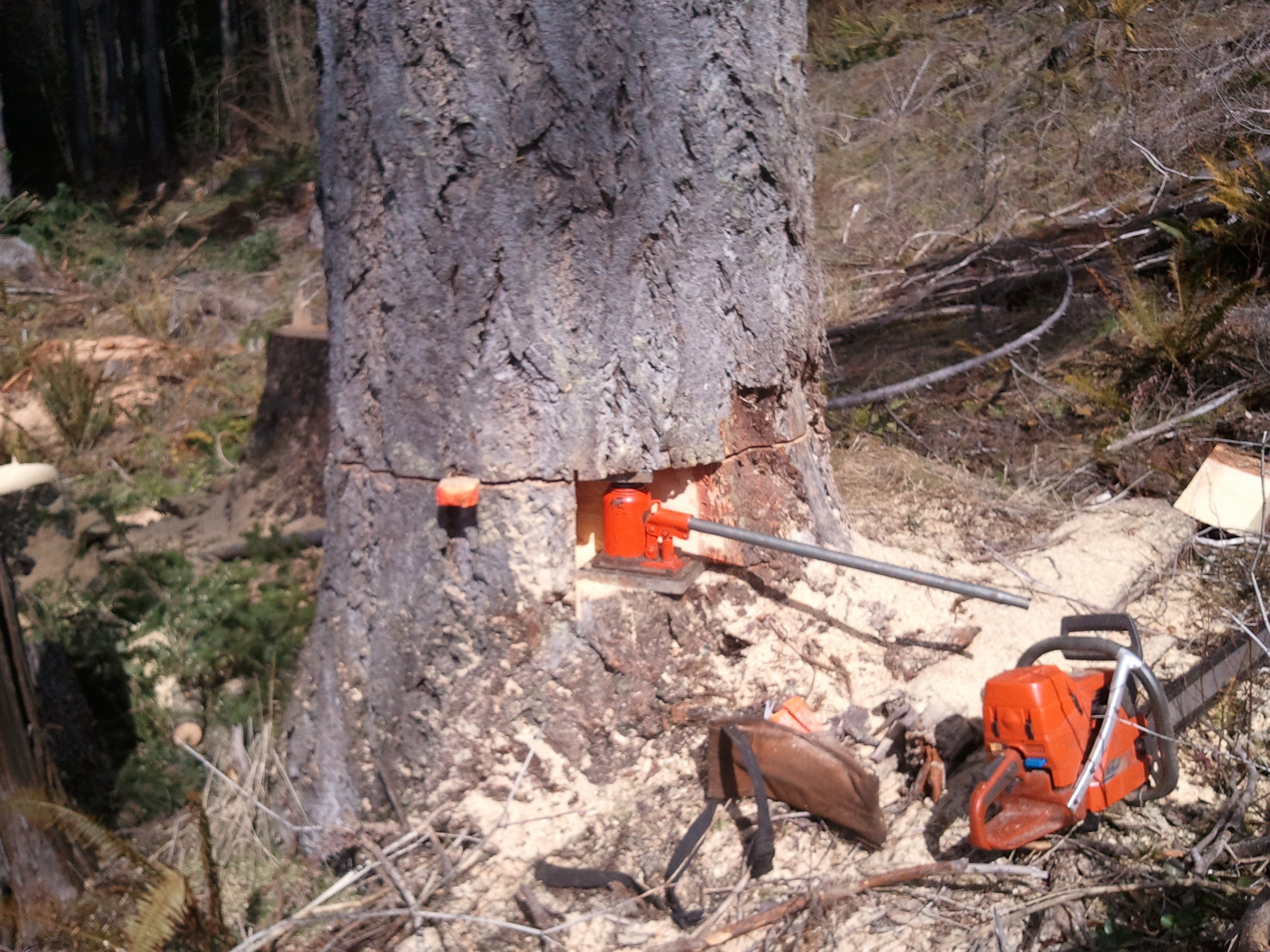Absolutely nothing wrong with using a bottle jack to fell a reasonable sized tree if you already are comfortable falling a tree with wedges and just need some extra lift, or maybe don't have enough wedges with you. I use them routinely for trees near buildings and other fixed structures to give me extra control and lift. Even a little two ton jack can add tip and point to some smaller diameter trees, a 6 to 8 ton is sufficient for many mid sized trees, and a 20 ton is ideal for most but the size can be an issue on some brands\models. But use wedges with it for control. Jack\slam wedge(s)\jack\slam wedges, and so on. Lift, sit, lift, sit. This way you get fine control. Also make sure to cut the smallest Jackhole you can. I saw an example just earlier today of someone cutting away the entire corner to create a jack "deck". Not something I would want to do, you remove the depth of your kerf for wedge placement, on smaller trees altogether. You want to use your bottle jack in correlation with your wedges, not in place of it. That is the key to not tipping it over the wrong way. That and of course keeping a strong hinge. Anyway this is what I've found in my years of cutting, and I'm 59 and the first time one of my bosses showed it to me was the 1970's so its been around a while. Poor mans jack to be sure, they do make pro ones but for residential fallers they can be overkill. Some reasonably priced tree spreaders out there if you hunt, basically a combined wedge\jack but honestly I've never had a jack kick out as some have described, but I also never use the "V" shape. I use a flat slightly inclined deck and a rectangular box, metal plates to keep from divoting the trunk and make sure I'm always Johnny-on-the-Spot with the wedges. The attached image shows a large dead ash I brought down next a historic 200 year old home. I was planning on felling it with just wedges but realized into the tree I needed a little more lift just to give me that added control so close to this home. I was shocked of course when I went to my car and realized I'd left my 6 ton at home and all I had was this little 2 ton. But it still was plenty to give me a little more tip and point than just the wedges as I had a very very narrow fall window with no room for error (trees on the right, smoke house, deck platform on the left, etc.) Just know how to fell a tree with wedges first. Before using a bottle jack. Then you'll be very happy not having to slam so many wedges. I cut down a dozen or more trees each week. Half of them I use jacks of various tonnage. Hope that helps. (Disclaimer | Drop it on your house or head its your fault not mine









